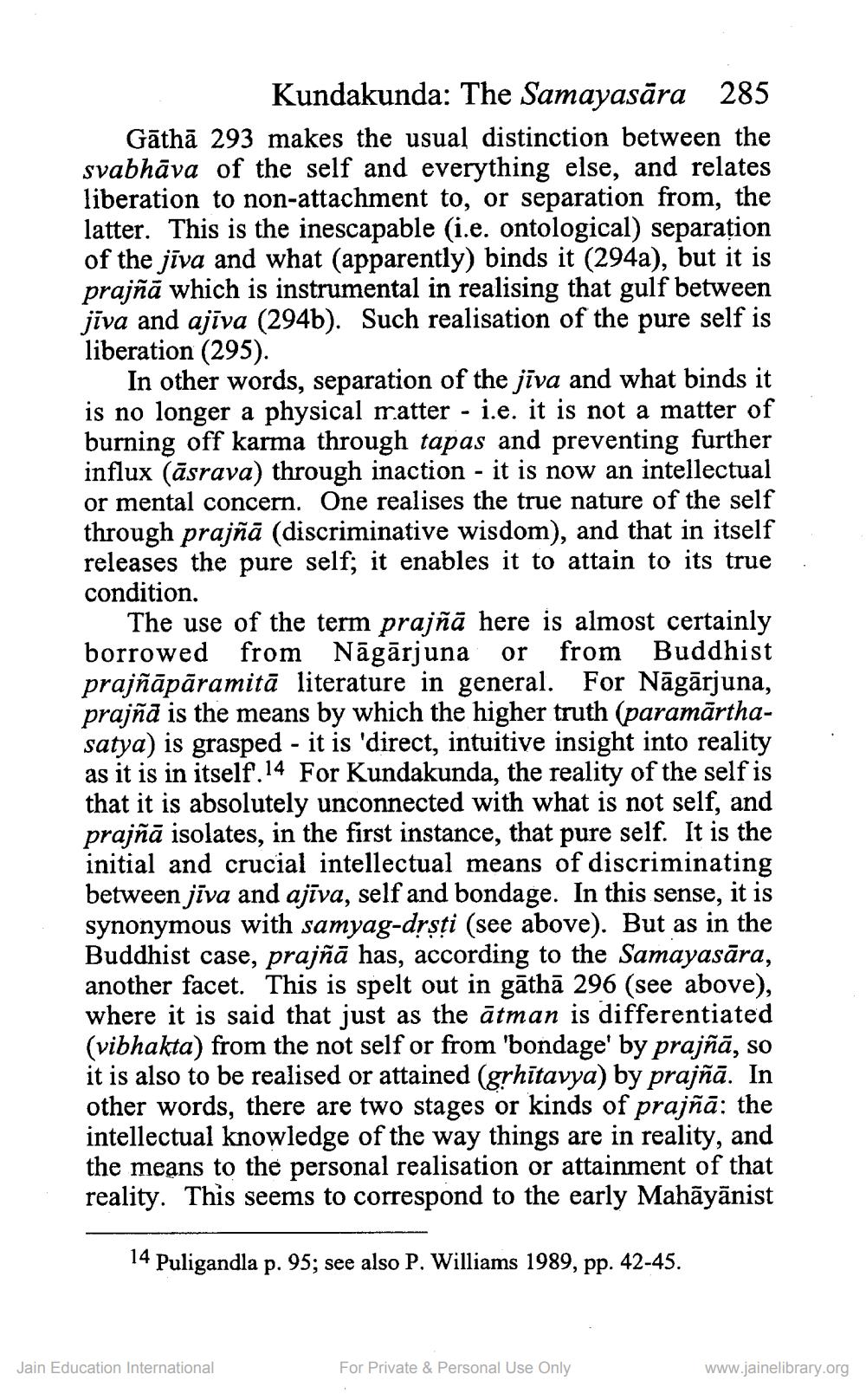________________
Kundakunda: The Samayasāra 285 Gāthā 293 makes the usual distinction between the svabhāva of the self and everything else, and relates liberation to non-attachment to, or separation from, the latter. This is the inescapable (i.e. ontological) separation of the jīva and what (apparently) binds it (294a), but it is prajñā which is instrumental in realising that gulf between jīva and ajīva (294b). Such realisation of the pure self is liberation (295).
In other words, separation of the jīva and what binds it is no longer a physical matter - i.e. it is not a matter of burning off karma through tapas and preventing further influx (āsrava) through inaction - it is now an intellectual or mental concern. One realises the true nature of the self through prajñā (discriminative wisdom), and that in itself releases the pure self; it enables it to attain to its true condition.
The use of the term prajñā here is almost certainly borrowed from Nāgārjuna or from Buddhist prajñāpāramitā literature in general. For Nāgārjuna, prajñā is the means by which the higher truth (paramārthasatya) is grasped - it is 'direct, intuitive insight into reality as it is in itself. 14 For Kundakunda, the reality of the self is that it is absolutely unconnected with what is not self, and prajñā isolates, in the first instance, that pure self. It is the initial and crucial intellectual means of discriminating between jīva and ajīva, self and bondage. In this sense, it is synonymous with samyag-drsti (see above). But as in the Buddhist case, prajñā has, according to the Samayasāra, another facet. This is spelt out in gāthā 296 (see above), where it is said that just as the ātman is differentiated (vibhakta) from the not self or from 'bondage' by prajñā, so it is also to be realised or attained (grhītavya) by prajñā. In other words, there are two stages or kinds of prajñā: the intellectual knowledge of the way things are in reality, and the means to the personal realisation or attainment of that reality. This seems to correspond to the early Mahāyānist
14 Puligandla p. 95; see also P. Williams 1989, pp. 42-45.
Jain Education International
For Private & Personal Use Only
www.jainelibrary.org




